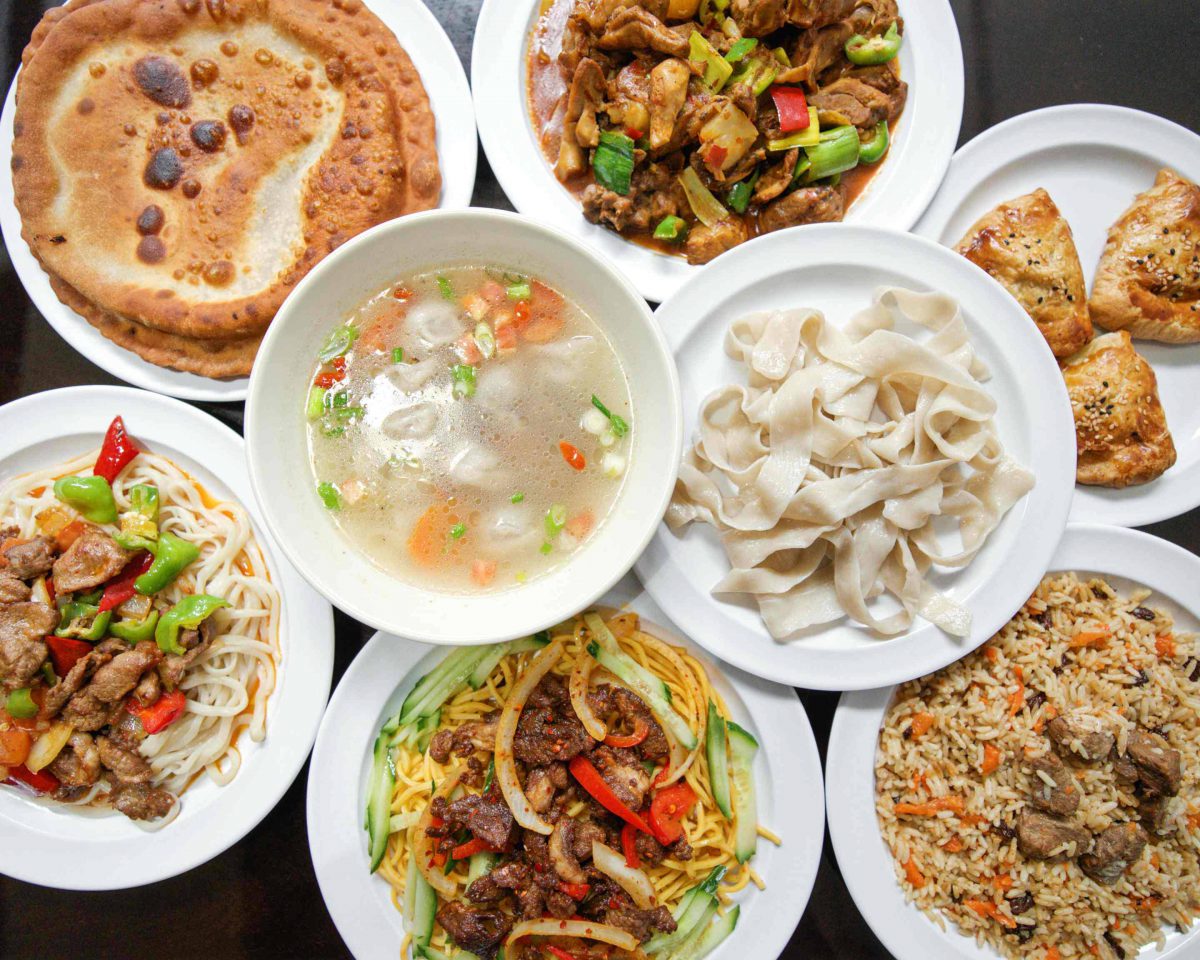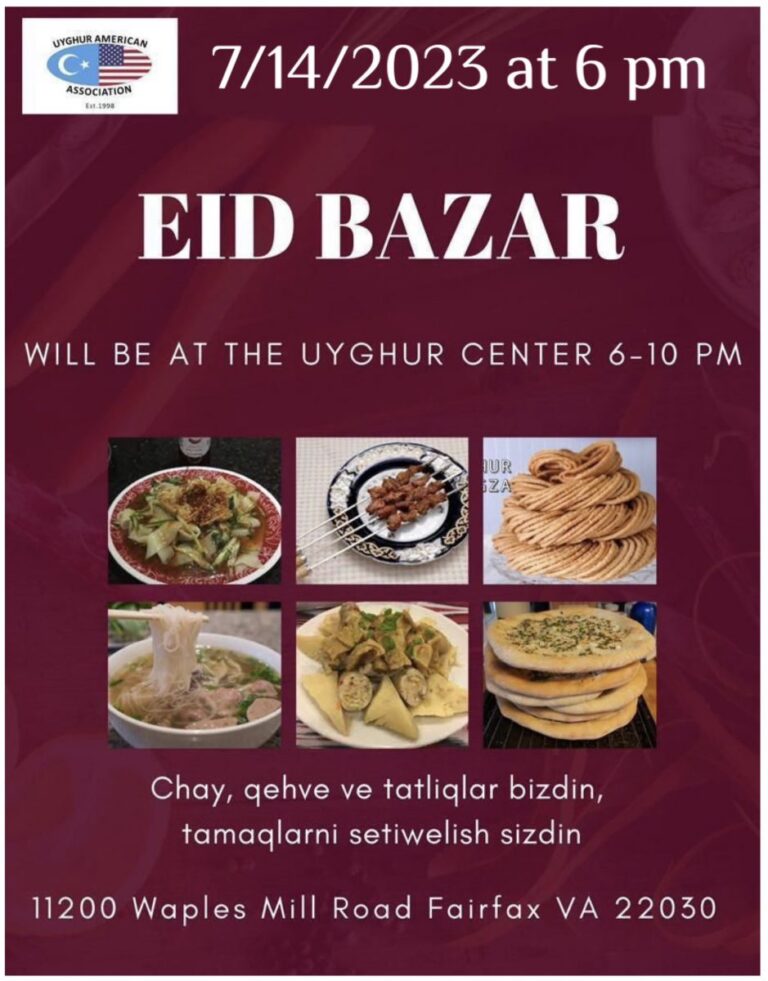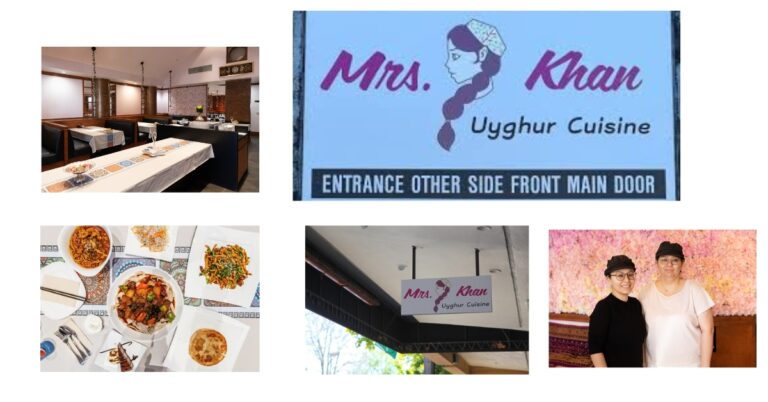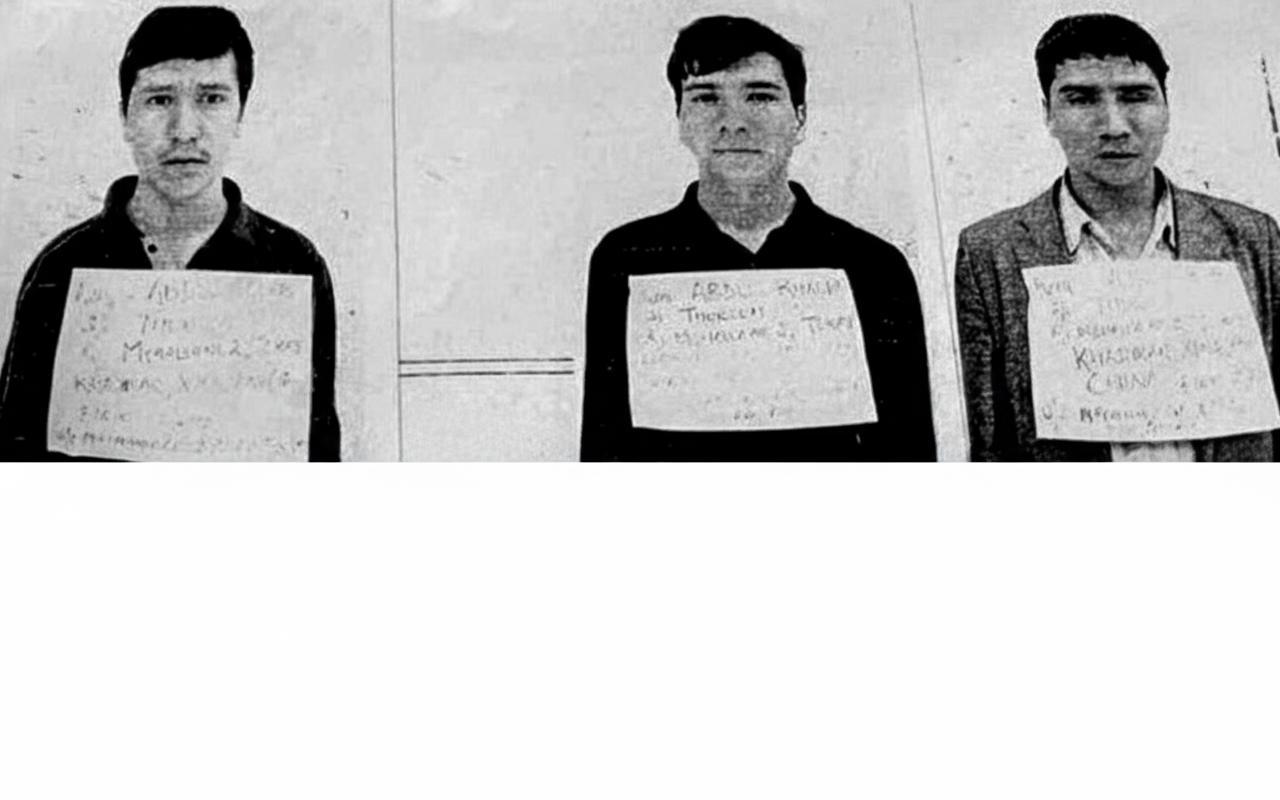
For Uyghurs, the Uyghur foods are the foods of love, comfort, root and pride. The unique character of Uyghur cuisine is the result of local products, traditional cooking methods, and recipes that have been passed down through generations. Uyghur food reflects the influence of neighboring cultures, such as Central Asian, Persian, Greek, and Arab cultures. However, our food culture remains uniquely our own.
What are the main Uyghur dishes?
Uyghur cuisine offers a diverse range of mouthwatering dishes crafted with flavorful ingredients sourced from different regions of Central Asia. Let’s explore some of the traditional Uyghur delicacies:
Laghman: (Uyghur noodle) This timeless dish showcases freshly hand-pulled noodles complemented by succulent lamb, vibrant vegetables, and a zesty sauce. The Chinese name for it is 拌面 (Bànmiàn).
Uyghur Polo/Pilaf: Among the favorites in Uyghur cuisine, Polo stands out as an immensely popular delight. It features fluffy and aromatic rice pilaf accompanied by tender shreds of lamb and beef, carrots, green onions, cottonseed oil, and quail eggs. In Chinese, it is known as 抓饭 (Zhuāfàn).
Suyuq ash (suyuq’ash) – Noodle soup, which means “liquid food,” typically consists of noodles in a flavorful broth.
Big Plate Chicken (Tohu Qorumishi): A delectable creation of hearty chicken stew prepared with bone-in chicken, potatoes, green peppers, garlic, red peppers, and a medley of house spices.
Samsa: Encased within a tender dough, Samsa is a delectable combination of flour, beef, onions, black peppers, salt, and sesame. In Chinese, it is called 烤包子 (Kǎo Bāozi).
Uyghur bread/Nann: Revered as a daily essential in Uyghur cuisine, Naan takes the spotlight as one of the most renowned street foods. This flatbread is traditionally baked in a clay oven, featuring the captivating flavors of cumin and chili powder. It comes in all shapes and sizes, including flatbread and thick bagel-like bread.
Kebabs: With lamb taking center stage in Uyghur culinary traditions, kebabs have emerged as a beloved method of savoring the exquisite meat. These kebabs involve roasting succulent lamb chunks on skewers, enhanced by the fragrant blend of cumin and chili powder.
Dogh/Uyghur Ice Cream: In the Uyghur homeland, you might see mounds of ice cream being served from street carts, affectionately known as “Uyghur Ice Cream.” The origin of Dogh comes from Kashgar.
Uyghur Matang | Nut Snack: Uyghur matang is a type of nut snack, such as walnuts, almonds, and more, typically sold by Uyghur street vendors. It has a delightfully chewy texture and is conveniently portable, making it an enjoyable snack to munch on while traveling by bus or train. Typically, matang is purchased in individual slices, and you’ll often find a range of different flavors to select from.
Chochure: A fiery lamb dumpling wonton soup peppered with basil. Some types include Tortellini, Dumplings, Ravioli, Wontons, Pierogi, Pelmeni, Cappelletti. It is nourishing, silky smooth, and warm.You can learn to cook Chocure here.
Qordaq (Kordak), also known as Kuurdak: It is a traditional meat dish common in Central Asia and Turkish cuisine, usually made from lamb, mutton, beef, or sheep liver, and sometimes with vegetables. When treated with Qoradaq, you can be sure you are treated with respect.
Etken Chay (Butter Tea): Traditionally made from tea leaves, yak butter, water, and salt, although butter made from cow’s milk is increasingly used due to its wider availability and lower cost.
Uyghur breakfast: In Uyghur traditional medicine, breakfast holds significant importance as one of the key determinants of overall health.There is an article dedicated to traditional Uyghur breakfast.
If you want to learn about cooking Uyghur dishes, Dolanchick is good destination.






